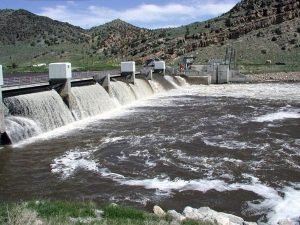Hydropower is the energy generated by the water power, using gravity and buoyancy waterfall. It is the most used form of renewable energy. Once built, a hydropower plant, it produces energy without emitting greenhouse gases compared to fossil fuels. In 2006, total production of hydropower, TW 2998 was approximately 20% of global consumption. This represented 88% of energy from renewable sources.

The advantages and disadvantages of hydropower are described below. You can also read about pros and cons of solar power here.
Advantages of Hydropower
The advantages of hydropower is described in brief below.
- The main advantage of hydropower is that the production costs are eliminated;
- Hydropower plants have a higher economic lifetime;
- The maintenance cost of such sources of “green energy” is very small, since the equipment is automated and does not require a large staff during power generation;
- Given that hydroelectric power plants do not burn fossil fuels, they do not directly emit greenhouse gases. Although carbon dioxide is produced in the manufacture of equipment, these emissions are not comparable to those obtained from the energy of non-renewable fuels;
- Basins constructed for the production of hydropower, can be used for other activities such as water sports, aquaculture and irrigation agriculture;
- Hydroelectric dams may even become tourist attractions, and prevent floods by storing excess water;
- Practical her availability is throughout the entire year;
- Energy obtained can be considered “clean” and “regenerative”.
Disadvantages of Hydropower
In addition to producing electricity, river engineering may have other consequences on local development through construction equipment, infrastructure development, the development of tourism, creating jobs, irrigation, navigation, growing local taxes and other. The disadvantages of hydropower is listed below.
- Huge projects also involve great risks- risk of rupture (bursting) of the dam – the dam help store a huge potential energy;
- Sabotage or terrorism threats to the safety area is another drawback of water power;
- Construction of hydropower can lead to imbalances in ecosystems and landscape change, and over time can be reduced river flow;
- Water accumulation can lead to thermal and chemical changes, in the depth of the reservoirs. Deposits, sediment, reached bottom may encourage the developmental accumulation of aquatic flora (plankton, algae) which under certain conditions can cause atrophy accumulation – reducing the amount of oxygen and death of wildlife. Also great accumulations can cause local climate changes primarily due to water evaporation (fog);
- Erosion – sediment is retained behind the dam so that the banks downstream of dams judgments are subject to erosion;
- Consequences of underground – galleries drainage culvert is true massifs traverse if they are not full. If their fill they become sources of pressure on the geological structures that cross.
Finally, hydropower and other energy sources should be valued properly for our own future.

im helping my kids with there science homework and this website really helps